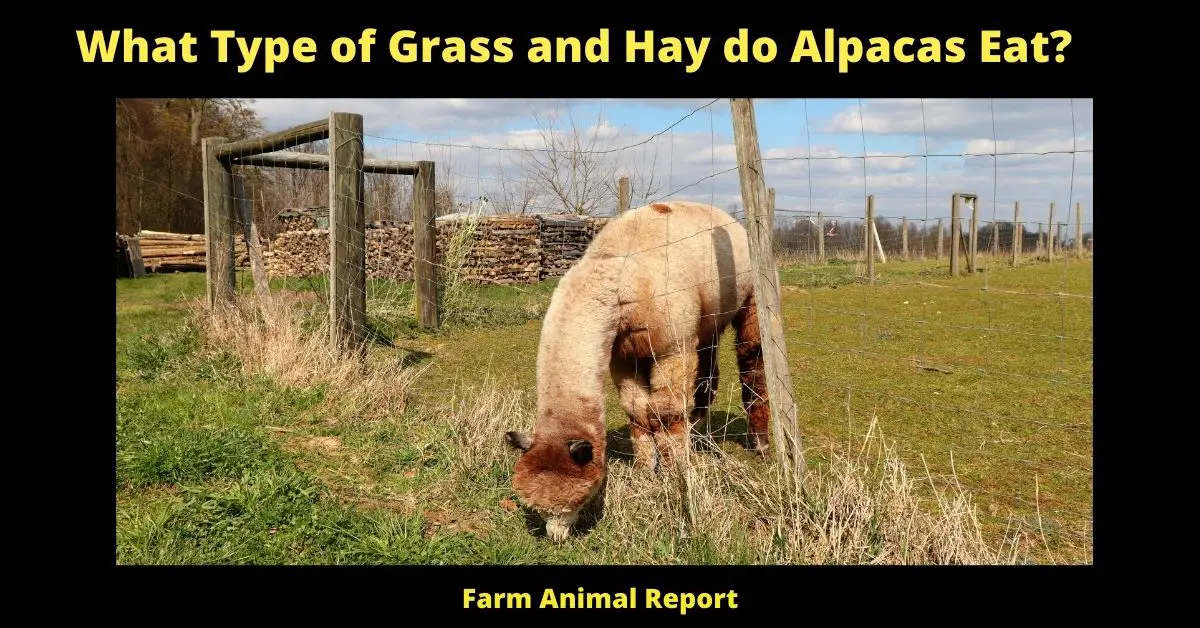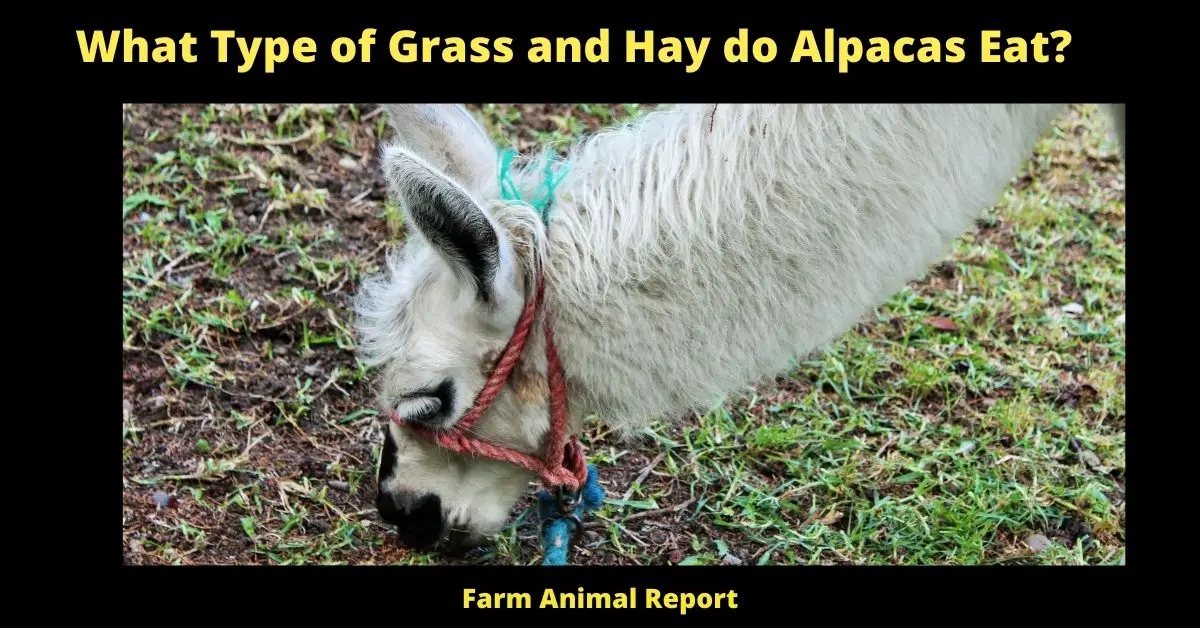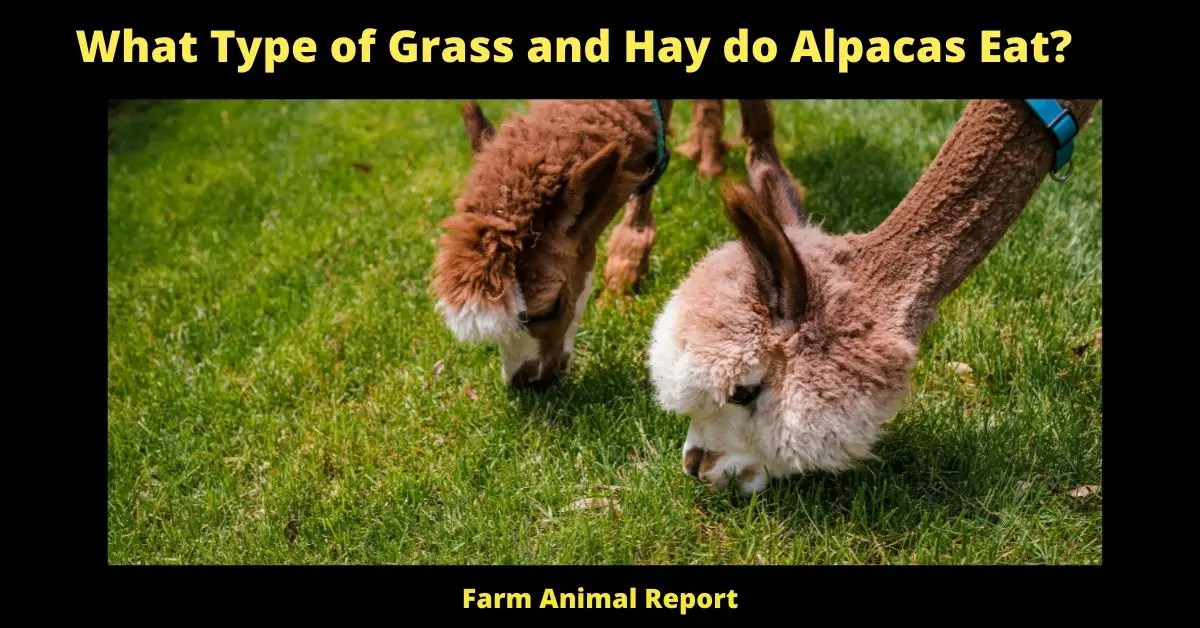Orchardgrass, timothy, fescue, white clover, and alfalfa are all common ingredients in forage diets. Alfalfa has been found to be more effective than other plants at erosion control and maintaining productivity; however, it also requires reseeding which can take up a lot of time depending on how often you want your land restocked with this type of foodstuff. High-fiber alpaca diets based on high-quality pasture and hay are best. The best dry forage is long fiber grass hay
What Type of Grass and Hay do Alpacas Eat?
Alpacas are a domesticated animal that is often kept as livestock. They have no natural predators and can survive in harsher environments than most other livestock animals. This makes them an excellent choice for those who live in the country or on farms where they don’t have much grass to cut and bale. Alpacas need hay, which is made up of dried grasses and grain plants, to eat. Knowing what type of hay alpacas eat will help you provide the best quality feed for your animals!
Check Out Amazon’s Educational Resources for Raising Alpacas
Jump To Alpaca (What Do Alpacas Eat?)**DIET**

What Type of Hay do Alpacas Eat?
Alpacas have a very specific diet, they can only eat certain types of grass and hay. The most common type of hay is alfalfa which provides nutrition for growth in young animals as well as providing a large number of nutrients to lactating mothers. In contrast, when feeding older or non-lactating females the best food is grass hay. Grass hay is low in protein and high in fiber which makes it highly digestible for alpacas, unlike legume hays such as clover or beans.
Legume hay contains higher levels of protein and calcium which can cause an upset in the digestive system, leading to illness or death.
In order to ensure alpacas have a healthy diet, it is important that they are fed with fresh grass or hay at least three times per day. The amount you feed your alpaca will vary depending on their age and lifestyle. Lactating mothers will need to eat more than non-lactating females, which in turn will need to eat more than males and juveniles.
When Alpacas are mating they will eat more than usual to keep up their energy levels.
Types of Hay are:
- Alfalfa Hay – This high-quality hay is the most common type of hay fed to alpacas and is excellent for young animals, lactating mothers, and pregnant females.
- Grass Hay – Grass hays are low in protein and high in fiber which makes them highly digestible for alpacas. This type of hay should be fed to older or non
- Clover Hay – Clover hay is good for feeding young animals and lactating females.
- Orchard Grass Hay – This type of grass has more protein than other types of hay, it should be fed to older or non-lactating alpacas.
- Barley Hay – Barley hays are good for young animals, pregnant females and lactating mothers because they have less protein than other types of hay.
- Oat Hay – This type of hay is best for lactating and pregnant females.
- Timothy Hay – This is good quality grass hay with a moderate protein level, it should be fed to older or non-lactating alpacas.
- Brome Grass Hay – Brome grass hays are high in fiber which makes them highly digestible for alpacas. Brome grass hay should be fed to older or non-lactating females.
- Bermuda Grass Hay – Bermuda hays are good for young animals, lactating mothers and pregnant females because they have less protein than other types of hay.
- Orchardgrass Hay – Orchardgrass is an excellent choice if you’re looking for a hay that is high in protein. It should be fed to older or non-lactating alpacas.
What Type of Grasses do Alpacas Eat?
There are many types of grasses that alpacas can eat. Alpacas prefer to eat grass that is shorter in height, so they don’t need to bend down as much. Some good examples of grasses that alpacas like to eat are fescue, brome, orchardgrass, timothy hay, and wheat straw.
The most important thing to remember is that the grass needs to be fresh and green. Alpacas will not eat dry or wilted grass. Make sure you keep your pastures mowed short, and provide a good source of hay for your alpacas during the winter months.
- Fescue – Fescue is a cool-season grass that is found in most of the United States. It has a high protein content, and alpacas love to eat it!
- Brome – Brome is another type of cool-season grass that grows well in areas with mild winters. It has a high sugar content, which makes it sweet and
- Orchard grass is also a cool-season grass that has shorter leaves than wheatgrass. It provides great nutrition for alpacas, and they love to eat it!
- Wheat straw – Wheat straw is the stalks of harvested wheat plants. Alpacas are able to digest this type of hay quite easily, making it another favorite among them
- Timothy Hay – Timothy hay is a type of grass that is high in fiber and low in sugar. It is the most popular hay for alpacas, and they love to eat it!
Alpacas should have free access to hay at all times. They should also be given a small amount of fresh grass every day. The recommended amount of fresh grass to feed an alpaca is about one pound per day. You can adjust this amount depending on the quality and age.
How Much do Alpacas Eat?
Alpacas are considered browsers, which means they primarily eat leaves and shoots from trees and shrubs. However, they will also nibble on grasses and hay. How much your alpaca eats depends on its age, weight, activity level, and availability of food. You should consult with your veterinarian to develop a feeding plan for your specific alpaca.
Generally, feed amounts of forage:
- Weaned Crias – .75 to .85% of their body weight
- Adult Alpacas – .50 to .70% of their body weight
- Pregnant Females – .60 to .80% of their body weight
- Lactating Females – .80 to .90% of their body weight
- Mature Alpacas – .50 to .60 % of their body weight.
- How Often Should I Feed My Alpaca?
- Alpacas, like most livestock animals, need access to fresh water and nutritious forage every day. This is especially important in the warm summer
Is Fescue Hay good for Alpacas?
Fescue Hay is considered an excellent source of fiber for grazing animals, especially in the winter. It is grown in cool climates and has a high nutritive value. The leaves are broad with a deep green color. It grows from 12 to 18 inches in height.
It is best harvested early in the morning while it is still damp. This will help to reduce the dust content.
Fescue hay can be fed to alpacas but should be limited to no more than 20% of their diet. Too much fescue hay can cause problems with digestion.
Does fescue hay have a lot of protein?
Fescue is not particularly rich in protein but has enough to meet animal requirements when it makes up most or all of their diet. FensuHay contains about 12% crude protein on average and contains about 30% total digestible nutrients.

How much alpaca hay do I need to buy?
The general rule is you should feed approximately one percent of the animal’s body weight in dry matter each day, so if your alpacas weigh 200 pounds each then that means they would eat around two pounds of fescue hay per day.
How much grain to feed alpacas?
Alpacas have difficulty digesting large quantities of grain, so it is best to feed them no more than they can consume in a day. Start by feeding them a small handful twice a day and gradually increasing the amount as needed.
Alpacas are mostly herbivores and prefer to eat grasses, but they will also eat hay if it is available. The grass is better food for them, but it can be difficult to find in certain climates. They also need hay as an alternative source of fiber and roughage that they might not get from grass alone.
Complications of feeding them too much grain are obesity and founder (a life-threatening condition caused by too much grain in the diet).
Bloating can also be a problem, so it is important to carefully monitor the amount of grain that you feed your alpacas.
Constipation can also be a problem when alpacas are not getting enough fiber in their diet, so it is important to provide them with both hay and grass.
The best way to make sure that your alpacas are getting the right type of food is to have a good understanding of what they eat and how much they need. Talk to your veterinarian and your local alpaca rancher for more information on what to feed them.
Also, Our article What Do Alpacas Like to Eat
What not to Feed Alpacas?
You should not feed alpacas grass that has gone to seed or any plants, such as clover and alfalfa.
If you notice your alpaca acting funny after eating certain foods it is best to remove them from their diet. You should also avoid feeding them moldy hay or anything with a lot of sugar in it like molasses because they can get sick from it.
Moldy hay can cause respiratory problems in alpacas and too much sugar will give them diarrhea.
Too Many vegetables can also give them diarrhea.
Too Many Fruits can cause them to get sick.
Also our Article What Do Alpacas Eat in The Winter
Final Thoughts – What Type of Grass and Hay do Alpacas Eat?
In Summary, alpacas are ruminants, they have a rumen. This means that grass is their primary food source and hay is simply an alternative for them when they cannot find enough of the right type of vegetation to graze on.


